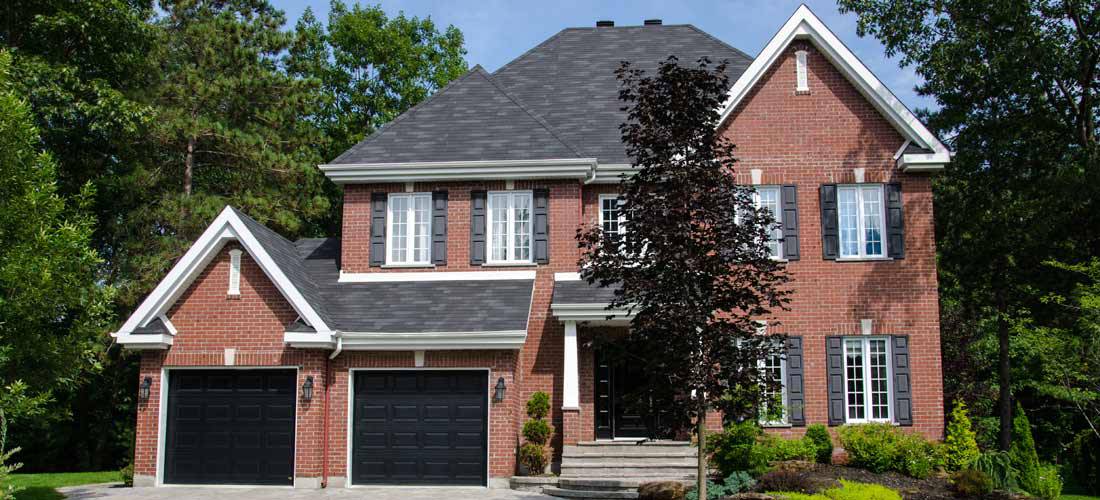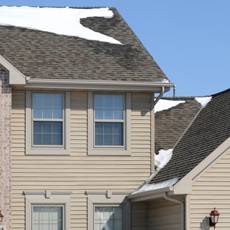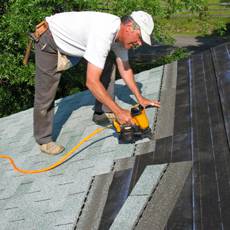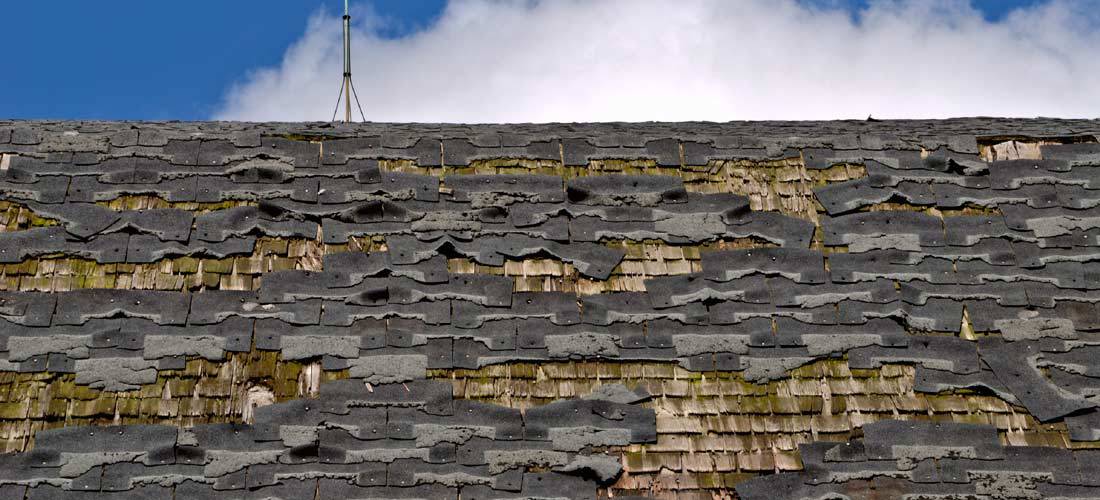How to install vents on your asphalt shingle roof to regulate roofing temperature and prevent damage.
Properly ventilating your asphalt roof is one of the most important considerations homeowners and builders must make when installing asphalt shingle roofing. Good attic ventilation extends the service life of asphalt shingles and reduces many roof issues by minimizing the difference in temperatures between the attic and outside air. Roof vents help to ventilate the attic and keeps the home comfortable while increasing energy efficiency.

Whether you're using fiberglass or organic shingles, ventilation is essential. When you receive a roofing estimate, the vents and insulation required for a proper ventilation system are typically included. Proper ventilation works to rid the attic of moisture and heat, which can cause damage to components of the roof system. Temperatures in an attic can reach up to 150 degrees Fahrenheit, and bathtubs, showers, washing machines and dryers operating on lower floors can all form condensation inside the attic. Over time, moisture and air circulation problems in the attic can cause deck deflection or sumps between the rafters. Most roof decks are built with plywood that can deteriorate or warp, becoming spongy and dangerous to walk on when repairs are being made. This happens because one side of the decking must be exposed to circulating air so it can breathe. Ice dams are another major roofing problem. An ice dam is the result of melting snow that repeatedly refreezes around the perimeter of the roof and backs up beneath the shingles. This can lead to leaks. Ice dams can be eliminated with an air barrier, proper ventilation and heavy insulation. Usually, a passive vent installation that provides more breathability in the attic space is all that is required for proper ventilation. Passive vent systems are usually installed along with the roof. In areas where there is little wind or where more ventilation is required, you may need a fan-powered vent system. Most roofers suggest installing one vent for every 150 square feet of space in the attic. In a fan-powered vent system, intake fans bring fresh air in while exhaust fans vent stale air to the outside. Many people prefer eyebrow vents or low-profile vents, which are often considered more aesthetically appealing. These vents can be used with both three-tab shingles and laminated architectural shingles and tend to be less visually obstructive than other ventilation types.
Over time, moisture and air circulation problems in the attic can cause deck deflection or sumps between the rafters. Most roof decks are built with plywood that can deteriorate or warp, becoming spongy and dangerous to walk on when repairs are being made. This happens because one side of the decking must be exposed to circulating air so it can breathe. Ice dams are another major roofing problem. An ice dam is the result of melting snow that repeatedly refreezes around the perimeter of the roof and backs up beneath the shingles. This can lead to leaks. Ice dams can be eliminated with an air barrier, proper ventilation and heavy insulation. Usually, a passive vent installation that provides more breathability in the attic space is all that is required for proper ventilation. Passive vent systems are usually installed along with the roof. In areas where there is little wind or where more ventilation is required, you may need a fan-powered vent system. Most roofers suggest installing one vent for every 150 square feet of space in the attic. In a fan-powered vent system, intake fans bring fresh air in while exhaust fans vent stale air to the outside. Many people prefer eyebrow vents or low-profile vents, which are often considered more aesthetically appealing. These vents can be used with both three-tab shingles and laminated architectural shingles and tend to be less visually obstructive than other ventilation types. A licensed and experienced roofer can help you make the ideal choice for ventilating your roofing system. Factors like vent operation, roof design and appearance should all be taken into consideration. While some homeowners possess the skills needed to ensure proper ventilation of their asphalt shingle roofing, most do not. If you're looking for the knowledge you need to take on a roofing project, QualitySmith is a great place to find experienced, qualified roofers. Asphalt shingle roofing is highly durable, often lasting several decades. Unfortunately, the shingles are subject to damage from a condition known as thermal shock. Thermal shock occurs when the shingles undergo a sudden change in temperature extremes, from cold to hot or vice versa. The shock can cause the shingles to rapidly expand or contract, resulting in damage.
A licensed and experienced roofer can help you make the ideal choice for ventilating your roofing system. Factors like vent operation, roof design and appearance should all be taken into consideration. While some homeowners possess the skills needed to ensure proper ventilation of their asphalt shingle roofing, most do not. If you're looking for the knowledge you need to take on a roofing project, QualitySmith is a great place to find experienced, qualified roofers. Asphalt shingle roofing is highly durable, often lasting several decades. Unfortunately, the shingles are subject to damage from a condition known as thermal shock. Thermal shock occurs when the shingles undergo a sudden change in temperature extremes, from cold to hot or vice versa. The shock can cause the shingles to rapidly expand or contract, resulting in damage.

The damage from thermal shock can take a variety of forms. The expansion of the shingles due to a sudden rise in temperature can cause buckling if the shingles do not possess enough room to accommodate the expansion. In aging roofs, expansion may also lead to cracking in shingles that have grown less flexible over time. The wood framing underneath the shingles can also be damaged as the shingles pull away from or bunch around the nails while expanding and contracting. There are several ways to prevent thermal shock in asphalt shingle roofing. To ensure a long life for your roof, it's important to choose the right type of asphalt shingles and install a ventilation system for the attic of the home. After installation, a reflective coating may also help to prevent damage from thermal shock.













Write a Comment